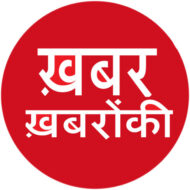
Ira Singh
Khabar Khabaron Ki,04 Aug’24
The upcoming week,(August 5-9, 2024) is set to unfold investors paying close attention to the Monetary Policy Committee (MPC) meeting by the Reserve Bank of India (RBI), the latest Q1FY25 (the April-June quarter results for fiscal 2024-25)earnings reports, the escalating Israel-Iran geopolitical situation, domestic and international macroeconomic indicators, the trends in foreign fund inflows, movements in crude oil prices, and other global market signals.
The Indian equity market exhibited volatility over the past week , ultimately closing marginally lower amid mixed signals. Domestic equity benchmarks Sensex and Nifty 50 snapped an eight-week winning run, their longest in 14 years last week, dragged by information technology (IT) and auto stocks, after weaker than expected US data triggered a global sell-off .However, selective buying in key heavyweights across sectors kept the sentiment positive.
The prospect of an interest rate cut by the US Federal Reserve has propelled equity markets to new heights. Focus will now turn to the Reserve Bank of India’s upcoming monetary policy review. The Monetary Policy Committee of the RBI is set to convene from August 6-8 to decide the course of interest rates and overall monetary policy.
A significant rise in food prices drove inflation in Asia’s third-largest economy to a five-month high of 5.08% in June, well above the RBI’s 4% medium-term target, suggesting the central bank will be wary of easing monetary policy too soon.
The Reserve Bank of India maintained its interest rates unchanged at 6.50% following its August meeting, due to persistent high inflation driven by increased food prices. Economists expect the first rate cut next quarter, as the central bank remains cautious about easing monetary policy amidst strong economic growth.
We still believe the RBI will keep rates on hold at the upcoming meeting,but expect to see a first rate cut in Q4. With the headline number picking up again in June, inflation has remained too high for policymakers to consider a dovish move just yet,” Alexandra Hermann, lead economist at Oxford Economics reportedly quoted as saying. Given economic growth momentum is still strong, the RBI faces less of a trade-off between inflation and growth and can hence keep interest rates higher for longer to rein in inflation without risking to cause cracks in the economy.”
Inflation was expected to average 4.5% this fiscal year and next, believe economists. It has remained above the central bank’s mid-point target of 4.0% for nearly five years
We still need to see how things pan out because a September cut by the Fed doesn’t necessarily translate into an October cut by the RBI,”If the growth potential is indeed higher, there is less necessity for the RBI to cut the policy rate, stated ,” Kunal Kundu, India economist at Societe Generale.
India’s forex reserves drop to $667.386 billion
India’s foreign exchange reserves experienced a significant drop of $3.4 billion, settling at $667.39 billion as of July 26, 2024, according to data released by the Reserve Bank of India (RBI). This decline follows a record high of $670.86 billion reached the previous week. The RBI intervenes in the market to manage liquidity and prevent excessive volatility in rupee value.
Economic Outlook
Despite the decline, India’s foreign exchange reserves remain substantial, providing a cushion against external shocks and contributing to overall economic stability. Economists and market analysts will continue to monitor the RBI’s policy measures and their impact on the forex reserves and currency markets.
